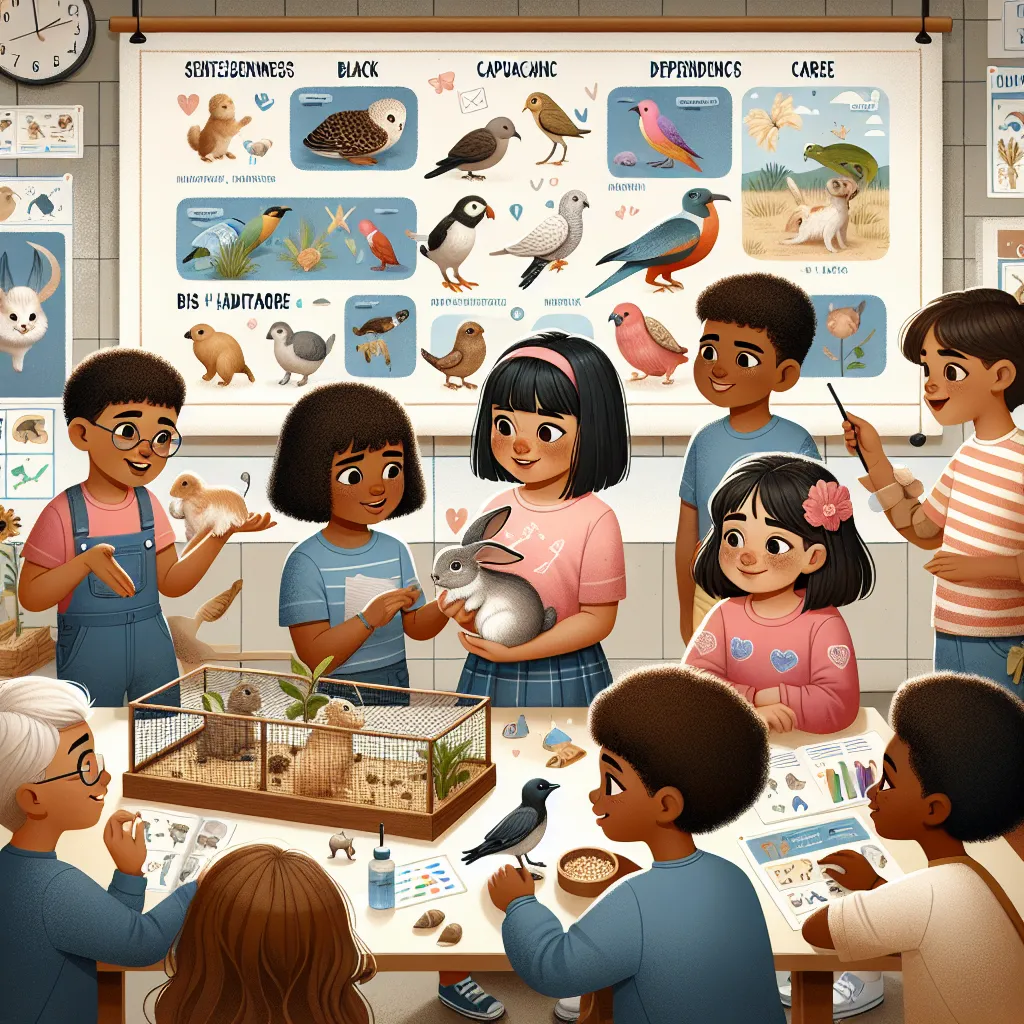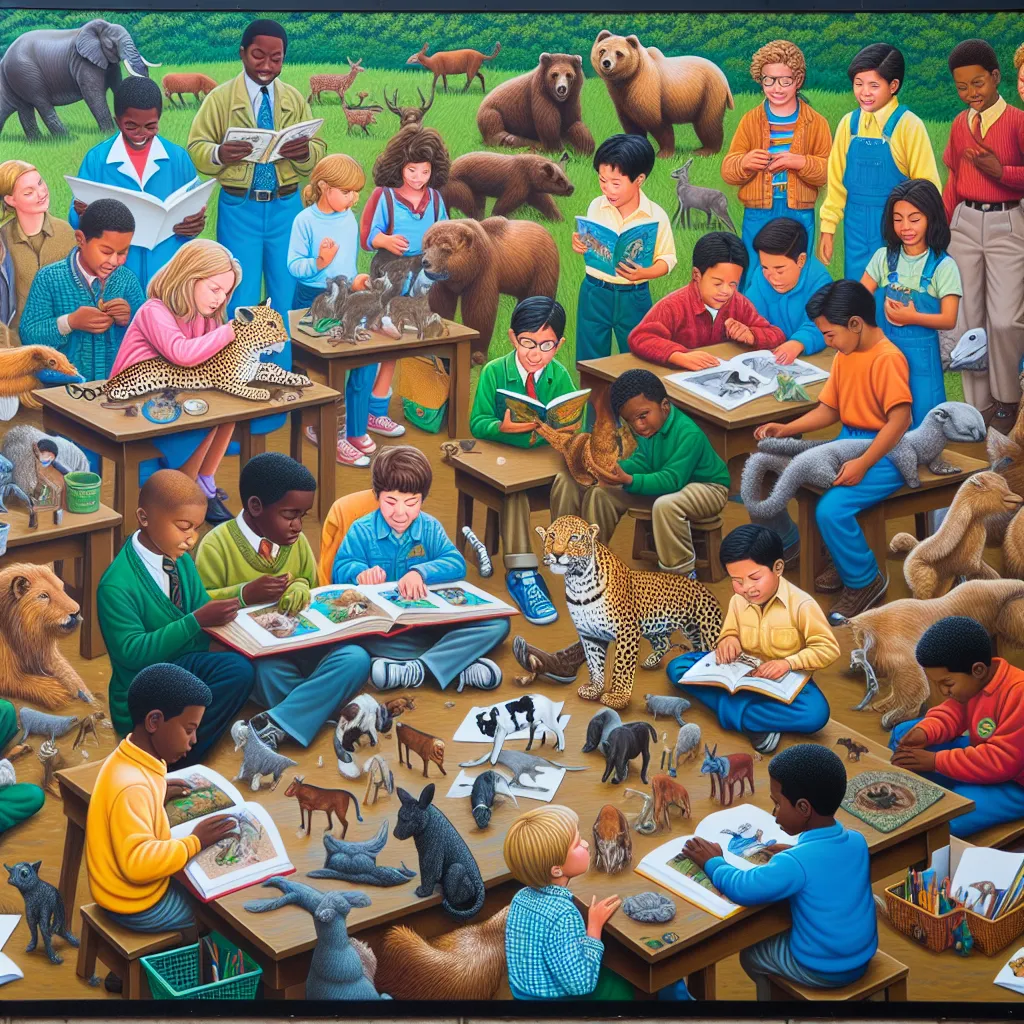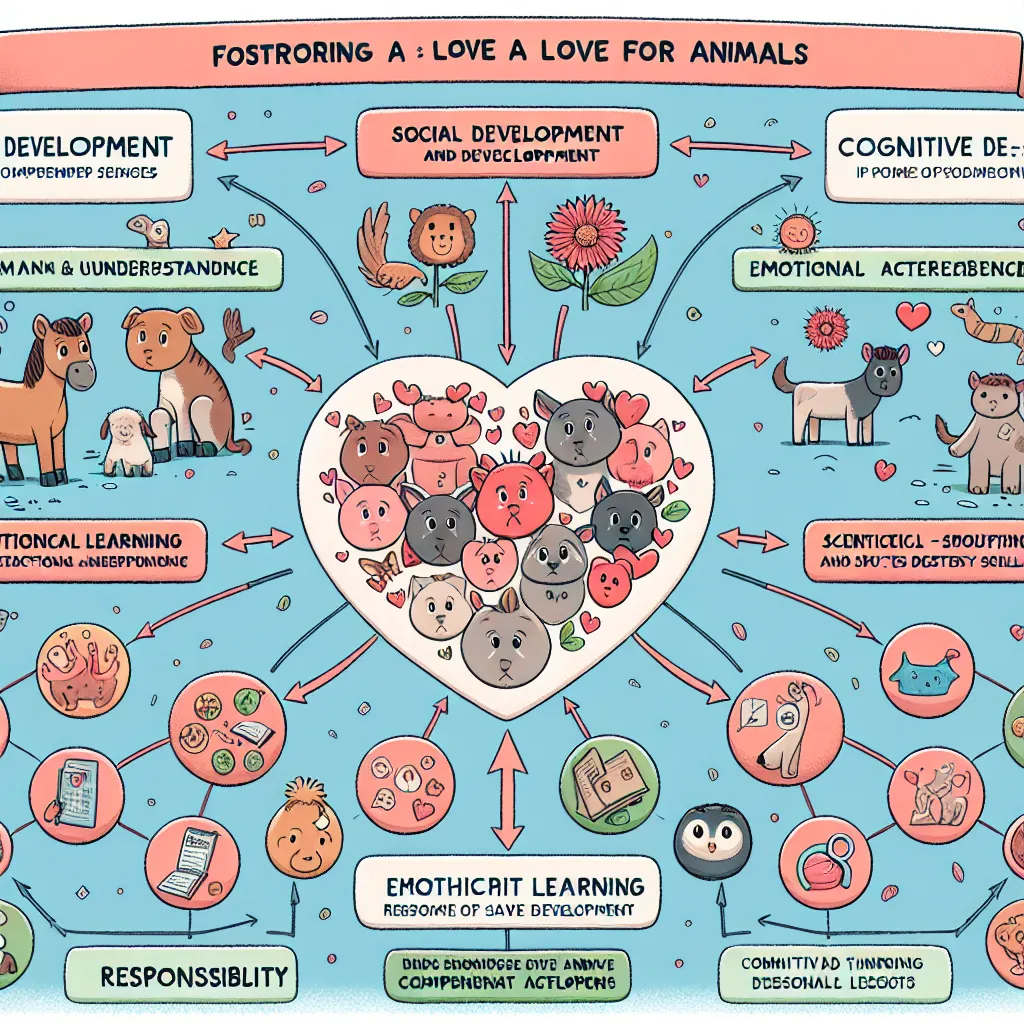Ask AI on The Internet
Question: As a foundation and intermediate phase teacher, developing a love of animals in your students is an important aspect of their holistic development. Write an essay of 1000-1200 words (this is about 2-3 typed pages) in which you discuss why this is important and how can you as foundation and intermediate phase teachers effectively foster a sense of compassion and love for animals in your students? Your essay should consider the following: 1. Why fostering a sense of compassion and love for animals in children is important. 2. An understanding of how developing a love of animals can contribute to students' overall social, emotional, and cognitive development. 3. Teaching resources. 4. Discussions. 5. Activities or projects. 6. Integration of technology. 7. Role modelling/Reflections of your own experiences. 8. Please note this scaffolded question builds upon the previous assignment, allowing you to delve deeper into the topic and explore various aspects of developing a love of animals in students. Read the following guidelines to structure your essay: 1. Use the question as your topic. Do not make use of any headings . 3. 4. 5. Ensure that your essay is coherent and grammatically correct. Proofread and edit before you submit . Try to keep to the prescribed word count. • • • • Remember to use the correct essay format: one paragraph for your introduction, one paragraph for the conclusion, and the remaining paragraphs for your discussion of the points. NOTE: You will be assessed on the following criteria:: LANGUAGE and STRUCTURE: 20 CONTENT: 30 TOTAL: 50 MARKS
Developing a Love for Animals in Foundation and Intermediate Phase Students Fostering a sense of compassion and love for animals in young students is paramount to their holistic development. As foundation and intermediate phase teachers, it is not only our responsibility to impart academic knowledge but also to nurture empathy, kindness, and respect for all living beings. Developing a love for animals in children is pivotal not just for the welfare of animals, but it also has profound implications on the social, emotional, and cognitive growth of students. Firstly, fostering compassion for animals in children lays the foundation for a more empathetic and caring society. When students learn to respect and care for animals, they are more likely to exhibit empathy and kindness towards other people, fostering a more compassionate community. Children who grow up with a love for animals often carry with them a sense of responsibility and stewardship for the world around them, which can lead to more socially responsible behavior as adults. Furthermore, the act of caring for animals nurtures children's emotional development. Interactions with animals can teach children about non-verbal communication, patience, and understanding. For instance, understanding an animal’s needs can enhance a child's ability to understand and respond to the emotional cues of others. The presence of classroom pets, for example, often serves as a calming presence, helping to reduce stress and anxiety among students. This emotional support can significantly enhance a child’s learning environment, making them more receptive and engaged in their educational experiences. The cognitive benefits of fostering a love for animals are equally noteworthy. Activities and projects that involve animals can stimulate curiosity and investigative skills, promoting critical thinking and problem-solving abilities. For instance, projects such as researching different animal habitats or the life cycles of various species encourage students to inquire, hypothesize, and draw conclusions based on observations. Such hands-on learning experiences can be far more engaging than rote memorization, instilling a deeper understanding and appreciation of the natural world. Effective teaching resources are crucial in fostering a sense of love and compassion for animals. Books, documentaries, and educational videos that highlight the lives of animals can serve as powerful tools. Literature such as “Charlotte’s Web” by E.B. White or “The Tale of Peter Rabbit” by Beatrix Potter can create lasting impressions on young minds about the lives and feelings of animals. Additionally, interactive resources such as educational apps and websites like National Geographic Kids can provide students with immersive, informative experiences about wildlife and conservation efforts. Discussions play an essential role in reinforcing the lessons learned through these resources. Classroom discussions on topics such as animal rights, endangered species, and the importance of conservation can stimulate critical thinking and empathy. These discussions can be further enriched by inviting guest speakers, such as veterinarians or wildlife conservationists, who can share real-life experiences and insights, making the subject matter more tangible and relatable for students. Engaging students in activities or projects that involve animals is another effective approach. Field trips to zoos, aquariums, and animal shelters can provide firsthand experiences that textbooks cannot. Furthermore, involving students in projects such as creating bird feeders, planting butterfly gardens, or participating in community animal rescue initiatives can foster a sense of responsibility and active engagement. These activities provide practical lessons in empathy and stewardship, as students see the direct impact of their actions on the well-being of animals. Incorporating technology into these efforts can amplify their effectiveness. Virtual reality (VR) experiences and interactive simulations can transport students to different animal habitats, allowing them to observe animals in their natural environments without leaving the classroom. Additionally, digital platforms can facilitate virtual field trips and live-streamed sessions with wildlife experts or tours of animal sanctuaries, broadening students' horizons and appreciation for global biodiversity. As teachers, role modeling compassionate behavior towards animals is perhaps one of the most powerful ways to instill these values in students. Sharing personal experiences, such as stories of pets or encounters with wildlife, can make the lessons more relatable and impactful. Reflecting on past experiences where we have shown empathy and care for animals, and discussing the emotions and thoughts involved, can provide students with concrete examples of compassionate behavior to emulate. In conclusion, fostering a love and compassion for animals in foundation and intermediate phase students is integral to their holistic development, impacting their social, emotional, and cognitive growth. Through the use of diverse teaching resources, engaging discussions, immersive activities, and the integration of technology, we can create meaningful learning experiences that generate empathy and appreciation for all living beings. Our efforts as teachers in role modeling compassionate behavior can further solidify these values, paving the way for a more empathetic and responsible future generation. It is through these collective efforts that we can cultivate a deep and enduring love for animals in our students, enriching their lives and contributing to a more compassionate society.
Think your answer is better than the AI's? Post it below.
Question Tags
If you want your question answered by an AI, click here.







Post your own comment: